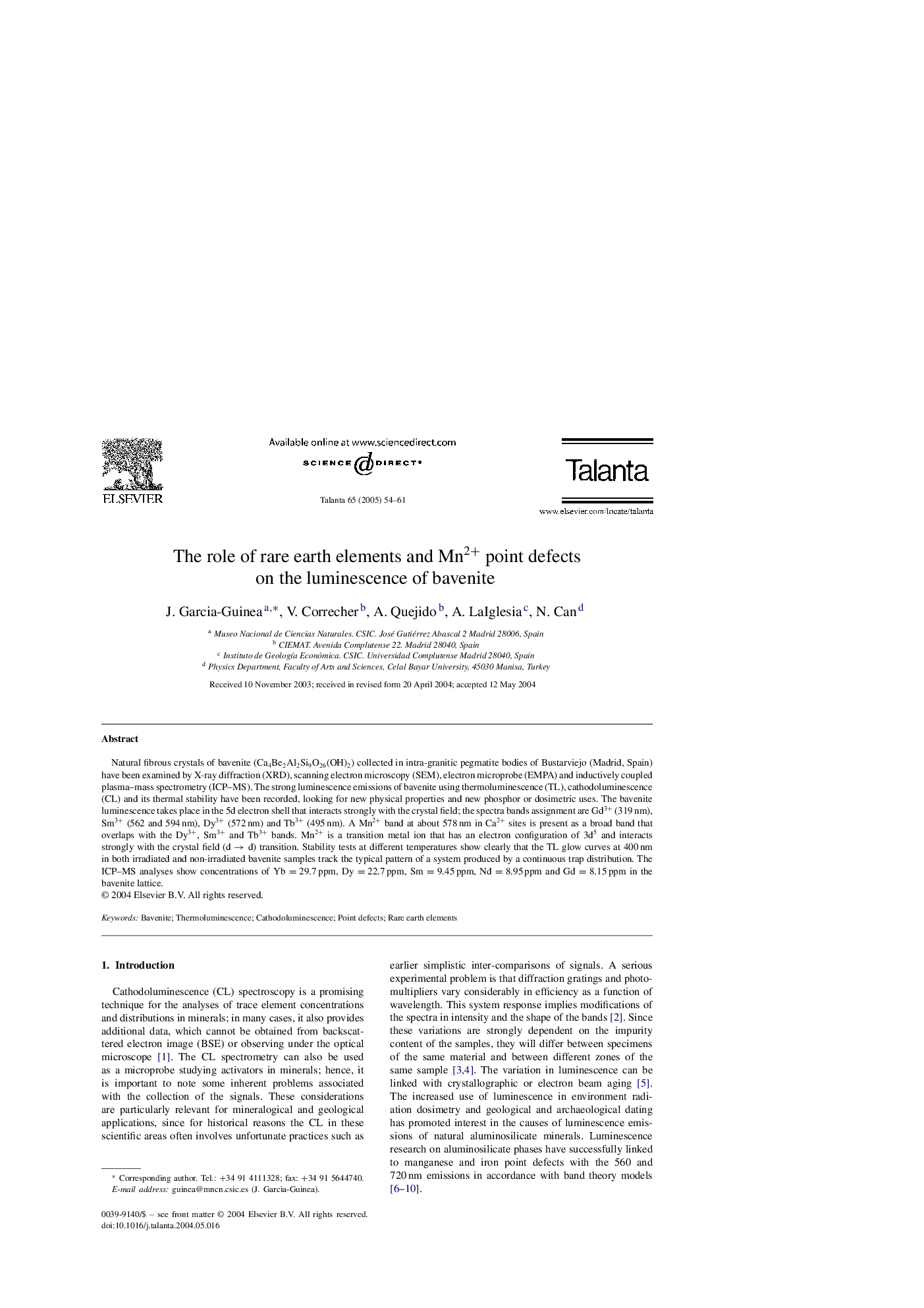| Article ID | Journal | Published Year | Pages | File Type |
|---|---|---|---|---|
| 10560191 | Talanta | 2005 | 8 Pages |
Abstract
Natural fibrous crystals of bavenite (Ca4Be2Al2Si9O26(OH)2) collected in intra-granitic pegmatite bodies of Bustarviejo (Madrid, Spain) have been examined by X-ray diffraction (XRD), scanning electron microscopy (SEM), electron microprobe (EMPA) and inductively coupled plasma-mass spectrometry (ICP-MS). The strong luminescence emissions of bavenite using thermoluminescence (TL), cathodoluminescence (CL) and its thermal stability have been recorded, looking for new physical properties and new phosphor or dosimetric uses. The bavenite luminescence takes place in the 5d electron shell that interacts strongly with the crystal field; the spectra bands assignment are Gd3+ (319Â nm), Sm3+ (562 and 594Â nm), Dy3+ (572Â nm) and Tb3+ (495Â nm). A Mn2+ band at about 578Â nm in Ca2+ sites is present as a broad band that overlaps with the Dy3+, Sm3+ and Tb3+ bands. Mn2+ is a transition metal ion that has an electron configuration of 3d5 and interacts strongly with the crystal field (d â d) transition. Stability tests at different temperatures show clearly that the TL glow curves at 400Â nm in both irradiated and non-irradiated bavenite samples track the typical pattern of a system produced by a continuous trap distribution. The ICP-MS analyses show concentrations of Yb = 29.7Â ppm, Dy = 22.7Â ppm, Sm = 9.45Â ppm, Nd = 8.95Â ppm and Gd = 8.15Â ppm in the bavenite lattice.
Related Topics
Physical Sciences and Engineering
Chemistry
Analytical Chemistry
Authors
J. Garcia-Guinea, V. Correcher, A. Quejido, A. LaIglesia, N. Can,
